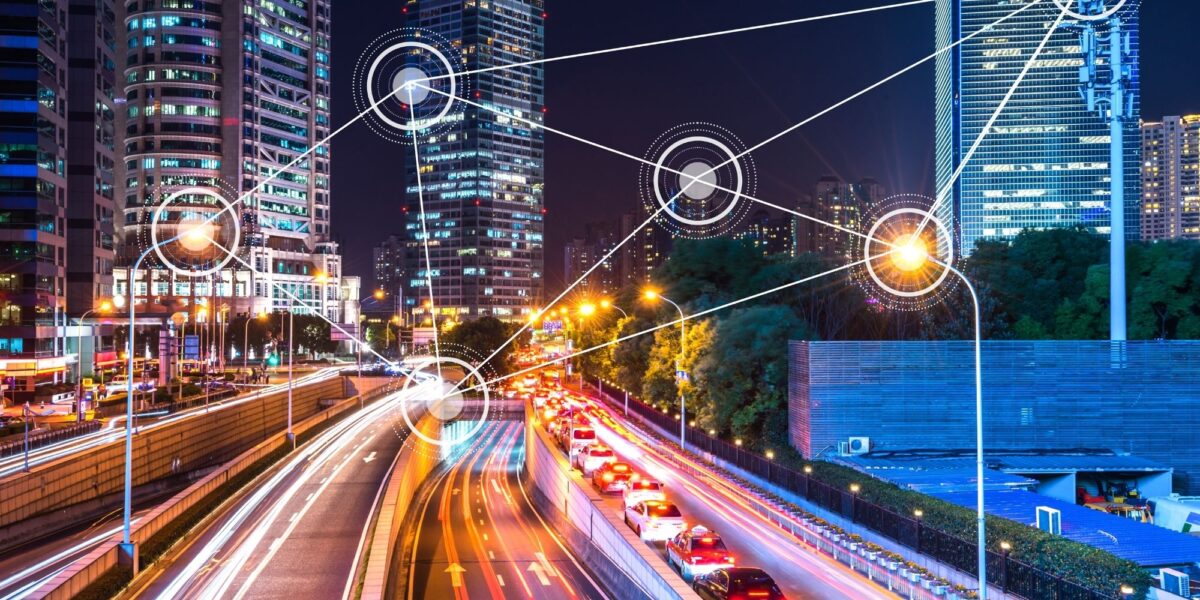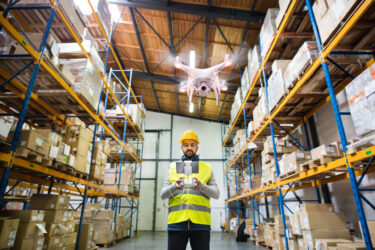

Equipment failure is inevitable, especially in systems that are heavily exploited. It is imperative to develop an appropriate maintenance strategy. Companies spend an average of 80% of their time reacting to maintenance issues rather than preventing them. How can predictive and preventive maintenance help in smart cities?
In 2016, the average cost of downtime across all businesses was $260,000 per hour, 60% more than in 2014. This problem is much more severe in some industries – downtime can cost up to $3 million per hour.
Instead of reacting to events that occur, we can take preventive actions to ensure the availability of critical infrastructure. An additional advantage of implementing an appropriate strategy is also the reduction of unplanned downtime.
Only 53% of organizations used a CMMS (computerized maintenance management software) for maintenance monitoring in 2018. Additionally, 55% used spreadsheets and schedules, and 44% still used paper. Is there any way new technologies can help with it?
- New technologies for maintenance
- What is predictive maintenance?
- Predictive maintenance in Smart City
- The predictive analysis could solve maintenance problems in European cities
- How may AI improve human safety in the city?
- What are the possible approaches to predictive maintenance?
- Difference between approaches
- How predictive maintenance influences technological development
- Predictive and preventive maintenance in smart cities
New technologies for maintenance
The backbone concept utilized in the latest systems is the Internet of Things. It allows different assets and systems to share and analyze data in real-time.
The amount of data incoming from the devices in distributed IoT systems makes it impossible to be analyzed by a human operator. Therefore, automated log analytics and these devices’ parameters could become useful and give new insights into the monitored data.
Using AI and machine learning helps us to process vast amounts of sensor data faster than ever before. Machine learning allows predictive models to maximize assets’ lifetime and efficiency through the optimization of periodic maintenance operations. AI models are responsible for looking for patterns in data that indicate a higher risk of undesirable events. It creates a possibility to significantly improve existing maintenance operations and go a step further towards predictive maintenance.
What is predictive maintenance?
Predictive maintenance is a type of condition-based maintenance. It monitors equipment performance and equipment using sensor devices, which gather real-time data and use them to predict required maintenance. The first step in implementing predictive maintenance is establishing baselines, which are acceptable condition limits for equipment. For this reason, we need to monitor assets’ conditional baselines to have an input for comparison to detect any abnormalities. The second step is to install IoT devices to measure the parameters required and connect them to the software, where you can analyze data. The last step is to create action plans.
Predictive maintenance saves up to 12% more than preventive maintenance and up to 40% over reactive maintenance. It allows for reducing unexpected failures by 55% and repair time by 60%.
Predictive maintenance in Smart City
The specificity of European road infrastructure in highly urbanized areas brings several challenges to smart city management. European countries use different criteria for prioritizing maintenance infrastructure, such as budget availability or conditions of roads. Many of the main communication ducts were established hundreds of years ago, resulting in the limited possibility to redesign the infrastructure or add modern, more complex components. This issue brings the challenge to innovate without significant interference with existing physical road infrastructure. On the other hand, with progressing digitalization and the resulting potential to improve the safety and security of citizens’ mobility, there is a need to look for and find the best possible technological solutions that are efficient, affordable, and ready to implement as soon as possible.
One of the most crucial safety and security issues on the road is maintaining and monitoring the urban area’s traffic infrastructure, among others, traffic lights, induction loops, traffic flow monitoring, pedestrian crossings, and city lighting. Providing the highest possible reliability of those components mitigates the risk of failures or misbehaviors of autonomous vehicles.
Current state-of-the-art AI is designed to ingest and process one-way information flow, encoded to be consumed by humans while at the same time lacking capacities that could process information just as a human brain does. With that in mind, it becomes evident that limiting the number of unexpected events (e.g. malfunctioning traffic lights) lowers the risk for AI-driven decision systems to fail. Guaranteeing the high availability and reliability of those systems affects human safety and can indirectly influence pollution, congestion, and overall quality of well-being.

The predictive analysis could solve maintenance problems in European cities
Though already connected to centralized systems, most current city-management processes still rely heavily on human interaction and decision-making. Coupled with more demanding SLAs, the implementation of AI and ML algorithms is a natural step in the evolution of transport and smart mobility.
Smart cities could benefit from it in the following ways:
- improved road infrastructure safety by using predictive analytics to process available
- logs diagnose potential future failures.
Improved software performance and delivery in road infrastructure monitoring and control could be a fast and cheap way to bring European cities to automated transportation readiness without expensive and complicated infrastructure modification.
This kind of system could collect input data from control units deployed within a city and utilize AI/ML processes to trigger notifications to road infrastructure operators (or even rescue teams when necessary) about a potential threat to citizens’ safety resulting from a component or system failure.
In case of an inconclusive “diagnosis,” the AI should trigger secondary feedback from the operator, which in turn shall be routed back to the ML algorithm to fine-tune the automated decision-making in the future.
How may AI improve human safety in the city?
Imagine a system that collects input data from control units deployed within a city. The system utilizes AI/ML processes to trigger dispatching of maintenance work in case of a reported malfunction. The system should be able to classify the quality and trustworthiness of the malfunction report, the severity of the reported malfunction based on the learnings from historical and real-time data, including traffic flow, failures, time of the day, type of the day (workday, weekend, bank holiday), and be able to dynamically allocate repair/maintenance teams to handle utmost important and relevant cases.
Furthermore, the algorithm should also incorporate and correlate data originating from sources outside of the system’s internal sources. These may include, but not only, Google Maps real-time traffic, social media sentiment analysis, local media outlets reporting traffic. Together, this should increase the operators’ overall focus, decrease their workload, improve traffic safety, and decrease failures. Described utilization of AI/ML significantly influences safety by reducing maintenance time, but is it possible to predict an impending failure of a device or part of the complex system?
What are the possible approaches to predictive maintenance?
Log-based predictive maintenance has been discussed for several years in the context of manufacturing. However, you can apply it to any system employing an IoT network. Data coming from devices used, such as road infrastructure monitoring, are a powerful source of information when analyzed properly. The event-log analysis could be one of the predictive maintenance approaches and has been already investigated to predict impending failures.
Each road infrastructure monitoring system consists of a network of devices installed, e.g., on intersections and near-road infrastructure. The system generates datasets that include information about those devices. Besides the detailed logs from the devices, the information related to their operation status and the number of vehicles passing through the intersection is often available. The devices provide the data upon request or with the sampling time set to chosen intervals.
Difference between approaches
In the typical log-based predictive maintenance approach, you should check the data against possible logs, resulting errors in an automated manner. To do this, you can analyze the semantic representation of logs in terms of the correlation between particular words and further (delayed) occurrence of errors. The logs can be represented initially as a bag of words, while further, more advanced techniques can be implemented.
The lack of response upon request could also be an indicator that you can use for such analysis. Also, the frequency of occurrence of particular errors can be a base for planning the maintenance of either a type of devices (optimal maintenance period can be inferred from the time between downtimes) or to a particular device (we can see, whether one device is more prone to be down that the others of the same type).
With the right data analytics techniques, you can train the appropriate AI model. Moreover, you can expand AI and ML’s role from support in decision-making to predicting the future.
How predictive maintenance influences technological development
Collecting and analyzing real-time data becomes more and more popular. That’s why the predictive maintenance market is growing. In smart city management, it could improve citizens’ quality of life, safety, or even save human lives. However, automation of road infrastructure maintenance becomes a real game-changer while considering vehicles’ approaching autonomization.
Smart mobility and efficient transport require reliable and safe road infrastructure. Secure connected, cooperative, and automated mobility and transportation are some of the biggest challenges, currently being on the top of the list. The development of electronic components, sensors, and embedded software and validation tools for assisted and automated vehicles are the significant research focus.
The semi-autonomous vehicle market volume was estimated to be 10.5 Million Units in 2017 and is projected to reach 27.7 Million Units by 2022. The autonomous vehicles market will reach 0.5 Million Units in 2025 and 6.9 Million Units by 2030.
The market predictions show that our roads will welcome millions of units relying on the surrounding environment’s predictability. The more reliable road and near-road infrastructure, the easier it will be to introduce autonomous vehicles to our everyday life. It is only one of the many examples of predictive maintenance’s role in the development of other technologies.

Predictive and preventive maintenance in smart cities
As engineers tend to understand the benefits of artificial intelligence and machine learning in designing and developing complex cyber-physical systems, we may expect a dynamic increase in the interest in predictive analysis and maintenance. In situations where our safety or quality of produced goods depends on the system’s reliability, it would be an enormous waste of potential not to use the data already collected.
Discussed benefits that smart city management could gain are only one example where predictive maintenance may save resources and provide the system’s resilience. Manufacturing, healthcare, or transportation are other sectors where AI and ML could change our reality in the upcoming years.
We have introduced you to the potential applications of predictive analytics and maintenance in smart cities as our R&D team is already working on solutions in this sector.
Contact us if you would like to explore predictive maintenance in your products and services.




